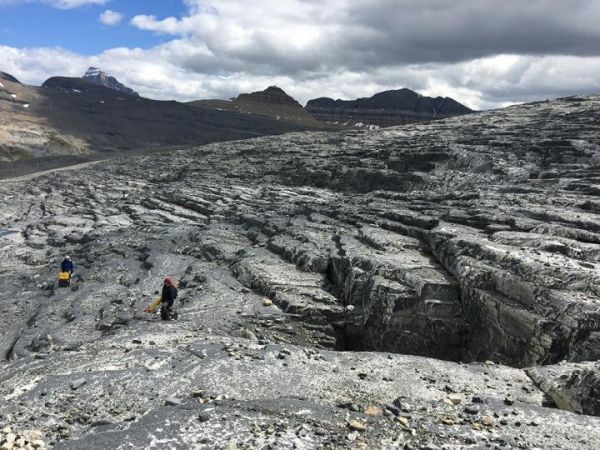The field photos show the hard, rough country that some glaciers slide over: rocky domes and bumps in granite, rocky steps and depressions in limestone. The glacier beds dwarf the researchers and their instruments. (As do the high mountains pictured on the various horizons.)
During their trips to glacier beds recently exposed by retreating glaciers in the Swiss Alps (Rhone, Schwarzburg and Tsanfleuron glaciers) and the Canadian Rockies (Castleguard Glacier), four glaciologists used laser and drone technology to precisely measure the rocky beds and record their very different contours.
The researchers turned the measurements into high-resolution digital models of those glacier beds. Then they went to work with manageable but representative subunits of the models to study how glaciers slide along the bedrock base.
“The simplest way to say it is we studied the relationship between the forces at the base of the glacier and how fast the glacier moves,” said Neal Iverson, a professor of geological and atmospheric sciences at Iowa State University and the study leader.
Read more at: Iowa State University
Researchers measure the topography of an exposed glacier bed at Castleguard Glacier in the Rocky Mountains of Alberta, Canada. (Photo Credit: Keith Williams, contributed by Christian Helanow)


